Physical Topologies
|
|
A topology is basically a map of a network. The physical topology of a network describes the layout of the cables and workstations and the location of all network components. Often, physical topologies are compared to logical topologies, which define how the information or data flows within the network. The topologies are usually similar. It is important to note, however, that a network can have one type of physical topology and a completely different logical topology. You'll learn more about this later in this chapter.
The cables or connections in a physical topology are often referred to as network media (or physical media). Choosing how computers will be connected in a company's network is critical. A wrong decision in the physical topology makes the media difficult to correct, because it is costly and disruptive to change an entire installation once it is in place. The typical organization changes the physical layout and physical media of a network only once about every 10 years, so it is important to choose a configuration that you can live with and that allows for growth.
In the next section, we'll look at physical media. In this section, we'll look at the five most common topologies:
-
Bus
-
Ring
-
Star
-
Mesh
-
Wireless
Bus
In a bus topology, all computers are attached to a single continuous cable that is terminated at both ends, which is the simplest way to create a physical network. Originally, computers were attached to the cable with wire taps. This did not prove practical, so drop cables are now used to attach computers to the main cable. Figure 1.5 shows an example of a bus network. Notice how the cable runs from computer to computer with several bends and twists.

Figure 1.5: An example of a physical bus topology
When communicating on a network that uses a bus topology, all computers see the data on the wire. This does not create chaos, though, because the only computer that actually accepts the data is the one to which it is addressed. You can think of a bus network as a small party. David is already there, along with 10 other people. David would like to tell Joe something. David yells out, 'Joe! Will you grab me a cup of coffee, please?' Everyone in the party can hear David, but only Joe will respond. A star network with a hub, which you'll read about later in this section, also operates in this manner.
Despite the simplicity of the bus topology, there are some inherent disadvantages to this design. For example, what happens if the wire breaks or is disconnected? Neither side can communicate with the other, and signal bounce occurs on both sides. The result is that the entire network is down. For this reason, bus topologies are considered to have very little fault tolerance.
Sometimes, because a cable is inside a wall, you cannot physically see a break. To determine if a break has occurred, you can use a tool known as a Time Domain Reflectometer, or TDR (also called a cable tester). This device sends out a signal and measures how much time it takes to return. Programmed with the specifications of the cable being tested, it determines where the fault lies with a high degree of accuracy. We'll discuss cable testers in Chapter 6, 'Network Installation and Upgrades.'
As with most things, there are pros and cons to a bus topology. On the pro side, a bus topology:
-
Is simple to install
-
Is relatively inexpensive
-
Uses less cable than other topologies
On the con side, a bus topology:
-
Is difficult to move and change
-
Has little fault tolerance (a single fault can bring down the entire network)
-
Is difficult to troubleshoot
Star
Unlike those in a bus topology, each computer in a star topology is connected to a central point by a separate cable. The central point is a device known as a hub. Although this setup uses more cable than a bus, a star topology is much more fault tolerant than a bus topology. This means that if a failure occurs along one of the cables connecting to the hub, only that portion of the network is affected, not the entire network. It also means that you can add new stations just by running a single new cable. Figure 1.6 shows a typical star topology.

Figure 1.6: A typical star topology with a hub
The design of a star topology resembles an old wagon wheel with the wooden spokes extending from the center point. The center point of the wagon wheel would be considered the hub. Like the wagon wheel, the network's most vulnerable point is the hub. If it fails, the whole system collapses. Fortunately, hub failures are extremely rare.
As with the bus topology, the star topology has advantages and disadvantages. The increasing popularity of the star topology is mainly due to the large number of advantages, which include the following:
-
New stations can be added easily and quickly.
-
A single cable failure won't bring down the entire network.
-
It is relatively easy to troubleshoot.
The disadvantages of a star topology include the following:
-
Total installation cost can be higher because of the larger number of cables, but prices are constantly becoming more and more competitive.
-
It has a single point of failure, the hub.
Ring
In the ring topology, each computer is connected directly to two other computers in the network. Data moves down a one-way path from one computer to another, as shown in Figure 1.7. The good news about laying out cable in a ring is that the cable design is simple. The bad news is that, as with bus topology, any break, such as adding or removing a computer, disrupts the entire network. Also, because you have to 'break' the ring in order to add another station, it is very difficult to reconfigure without bringing down the whole network. For this reason, the physical ring topology is seldom used.
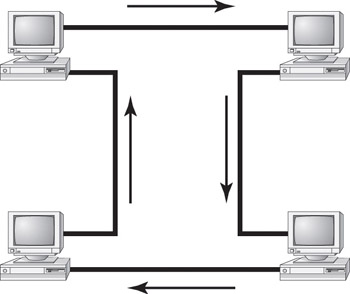
Figure 1.7: A typical ring topology
| Note | Although its name suggests a relationship, Token Ring does not use a physical ring topology. It instead uses a physical star, logical ring topology. You will learn more about logical topologies later in this chapter. |
A few pros and many cons are associated with a ring topology. On the pro side, the ring topology is relatively easy to troubleshoot. A station will know when a cable fault has occurred because it will stop receiving data from its upstream neighbor.
On the con side, a ring topology is:
-
Expensive, because multiple cables are needed for each workstation.
-
Difficult to reconfigure.
-
Not fault tolerant. A single cable fault can bring down the entire network.
Mesh
In a mesh topology (as shown in Figure 1.8), a path exists from each station to every other station in the network. While not usually seen in LANs, a variation on this type of topology-the hybrid mesh-is used on the Internet and other WANs in a limited fashion. Hybrid mesh topology networks can have multiple connections between some locations, but this is done only for redundancy. Also, it is not a true mesh because there is not a connection between each and every node, just a few for backup purposes. Notice in Figure 1.8 how complex the network becomes with four connections.
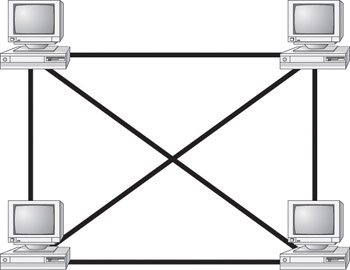
Figure 1.8: A typical mesh topology
As you can see in Figure 1.8, a mesh topology can become quite complex as wiring and connections increase exponentially. For every n stations, you will have n(n -1)/2 connections. For example, in a network of 4 computers, you will have 4(4-1)/2 connections, or 6 connections. If your network grows to only 10 computers, you will have 45 connections to manage! Given this impossible overhead, only small systems can be connected this way. The payoff for all this work is a more fail-safe, or fault-tolerant, network, at least as far as cabling is concerned.
Today, the mesh topology is rarely used, and then only in a WAN environment and only because the mesh topology is fault tolerant. Computers or network devices can switch between these multiple, redundant connections if the need arises. On the con side, the mesh topology is expensive and, as you have seen, quickly becomes too complex.
Wireless
Radio frequency (RF) systems are being used all over corporate America. The RF networking hardware that is available today makes it easy for people to connect wirelessly to their corporate network as well as to the Internet.
The most popular example of an RF network today is what is known as an ad hoc RF network. These networks are created when two or more entities with RF transceivers that support ad hoc networking are brought within range of each other. The two entities will send out radio waves to each other, and they will both recognize that there is another RF device close by that they can communicate with. These ad hoc networks allow people with laptops or handheld devices to create their own networks on the fly and transfer data. Figure 1.9 shows an example of an ad hoc network between three notebooks. All of these notebooks have the same RF devices that support ad hoc and have been configured to talk to each other.
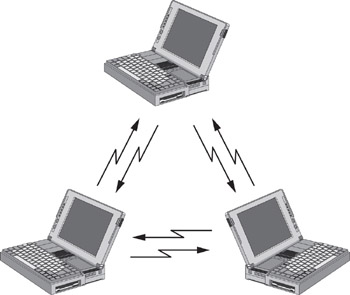
Figure 1.9: An example of an ad hoc RF network
The other example of an RF network is a multipoint RF network. This type of RF network has many stations, each with an RF transmitter and receiver, and each station communicates with a central device known as a wireless bridge. A wireless bridge (known as a wireless access point, or WAP, in RF systems) is a device that provides a transparent connection to the host LAN via an Ethernet or Token Ring connection and uses some wireless method (e.g., infrared, RF, or microwave) to connect to the individual nodes. This type of network is mainly used for two applications: office 'cubicle farms' and metropolitan-area wireless Internet access. Each of these applications requires that the wireless bridge be installed at some central point and the stations that are going to access the network be within the operating range of the bridge device. Figure 1.10 shows an example of this type of network. Note that the workstations at the top of the figure can communicate wirelessly to the server and printer connected to the same network as the bridge device.
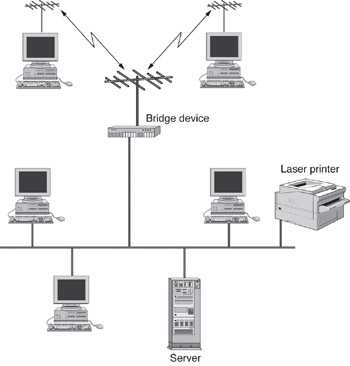
Figure 1.10: An example of an RF multipoint network
There are many different brands, makes, and models of RF LAN equipment. This used to be a source of difficulty with LAN installers. In the infancy of RF wireless networking, every company used different frequencies, different encoding schemes, different antennas, and different wireless protocols. The marketplace was screaming for a standard to be proposed. For this reason, the IEEE 802.11 standard was developed. 802.11 is a networking standard that specifies various protocols for wireless networking. It does in fact specify that either infrared or RF can be used for the wireless network, but most RF systems are the only ones advertising IEEE 802.11 compliance.
Table 1.1 shows some examples of the RF wireless networking products available at the time of writing this book. This table shows which RF technology each product uses as well as its primary application.
| Product | RF Technology | Application | Speed |
|---|---|---|---|
| Breezecom's BreezeNET | Spread Spectrum | Multipoint and ad hoc | 1 to 3Mbps |
| Lucent's WaveLAN | Spread Spectrum | Multipoint | 1 to 11Mbps |
| Apple's AirPort | Spread Spectrum | Multipoint | 11Mbps |
Backbones and Segments
With complex networks, we must have a way of intelligently identifying which part of the network we are discussing. For this reason, we commonly break networks into backbones and segments. Figure 1.11 shows a sample network and identifies the backbones and segments. You should refer to this figure when necessary as you read about backbones and segments.
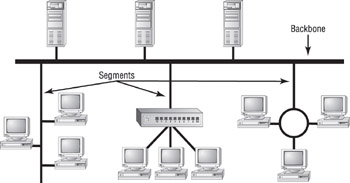
Figure 1.11: Backbone and segments on a sample network
Understanding the Backbone
A backbone is the part of the network to which all segments and servers connect. A backbone provides the structure for a network and is considered the main part of any network. It usually uses a high-speed communications technology of some kind, such as FDDI (Fiber Distributed Data Interface) or 100-Megabit Ethernet (Fast Ethernet). All servers and all network segments typically connect directly to the backbone so that any segment is only one segment away from any server on that backbone. Because all segments are close to the servers, the network is more efficient. Notice in Figure 1.11 that the three servers and three segments connect to the backbone.
Understanding Segments
Segment is a general term for any short section of the network that is not part of the backbone. Just as servers connect to the backbone, workstations connect to segments. Segments are connected to the backbone to allow the workstations on them access to the rest of the network. Figure 1.11 shows three segments.
Selecting the Right Topology
Each topology has its advantages and drawbacks. The process of selecting a topology can be much like buying a pair of shoes. It's a matter of finding something that fits, feels right, and is within your budget. Instead of asking, 'What is your shoe size?,' ask questions such as 'How much fault tolerance is necessary?' and 'How often will I need to reconfigure the network?' Creating a simple network for a handful of computers in a single room is usually done most efficiently by using a bus topology, because it is simple and easy to install. Larger environments are usually wired in a star because moves, adds, and changes to the network are performed more efficiently with a physical star than with any of the other topologies.
If you need uptime to the definition of fault resistant (that is, 99-percent uptime or less than 8 hours total downtime per year), you should seriously consider a partial mesh layout. While you are thinking about how fault tolerant a mesh network is, let the word 'maintenance' enter your thoughts. Remember that you will have n(n -1)/2 connections to maintain, which will quickly become a nightmare and could exceed your maintenance budget.
Generally speaking, you should balance the following considerations when choosing a physical topology for your network:
-
Cost
-
Ease of installation
-
Ease of maintenance
-
Cable fault tolerance
|
|